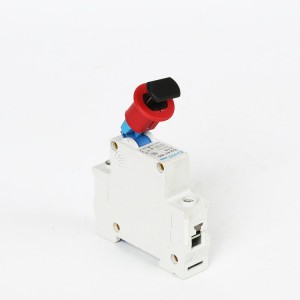Introduction
In today’s fast-paced industrial world, ensuring electrical safety is paramount. Electrical accidents can lead to severe injuries, fatalities, and substantial financial losses. One crucial component in maintaining electrical safety is the use of circuit breaker lockouts. But what exactly are circuit breaker lockouts, and how do they function? Let’s dive in and explore the world of circuit breaker lockouts.
What is a Circuit Breaker Lockout?
A circuit breaker lockout is a device used to lock circuit breakers in the “off” position, preventing accidental or unauthorized re-energization of electrical circuits. These lockouts are vital for protecting workers during maintenance or repair activities.
Components of a Circuit Breaker Lockout
A typical circuit breaker lockout consists of:
- A locking mechanism to secure the breaker handle.
- A padlock or similar locking device.
- Identification tags to indicate the lockout status.
How Circuit Breaker Lockouts Work
Mechanism of Action
Circuit breaker lockouts work by physically blocking the breaker switch from moving to the “on” position. This ensures that the circuit remains de-energized while maintenance or repair work is performed.
Installation Process
Installing a circuit breaker lockout involves the following steps:
- Turn off the circuit breaker.
- Attach the lockout device to the breaker switch.
- Secure the device with a padlock.
- Attach identification tags.
Types of Circuit Breaker Lockouts
Snap-On Lockouts
Snap-on lockouts are designed for quick and easy application. They snap directly onto the breaker switch and are secured with a padlock.
Clamp-On Lockouts
Clamp-on lockouts are versatile devices that can be used on various breaker sizes and types. They use a clamping mechanism to secure the breaker handle.
Universal Lockouts
Universal lockouts are adaptable to almost any circuit breaker. They offer flexibility and compatibility, making them suitable for diverse applications.
Benefits of Using Circuit Breaker Lockouts
Enhanced Safety
The primary benefit of using circuit breaker lockouts is enhanced safety. They prevent accidental energization of circuits, reducing the risk of electrical accidents.
Prevention of Accidental Energization
Lockouts ensure that circuits remain de-energized during maintenance, preventing accidental energization that could harm workers.
Compliance with Regulations
Using circuit breaker lockouts helps companies comply with safety regulations and standards, avoiding legal penalties and enhancing workplace safety.
Industries that Use Circuit Breaker Lockouts
Manufacturing
In manufacturing, circuit breaker lockouts are essential for ensuring the safety of workers during machine maintenance and repairs.
Construction
The construction industry relies on lockouts to protect workers from electrical hazards during construction and renovation projects.
Energy Sector
The energy sector uses circuit breaker lockouts to maintain safe working conditions during the maintenance of electrical grids and equipment.
Regulations and Standards
OSHA Requirements
The Occupational Safety and Health Administration (OSHA) mandates the use of lockout/tagout procedures to ensure worker safety during maintenance activities.
International Standards
Various international standards, such as ISO and IEC, also emphasize the importance of using circuit breaker lockouts for electrical safety.
Post time: Jul-01-2024

